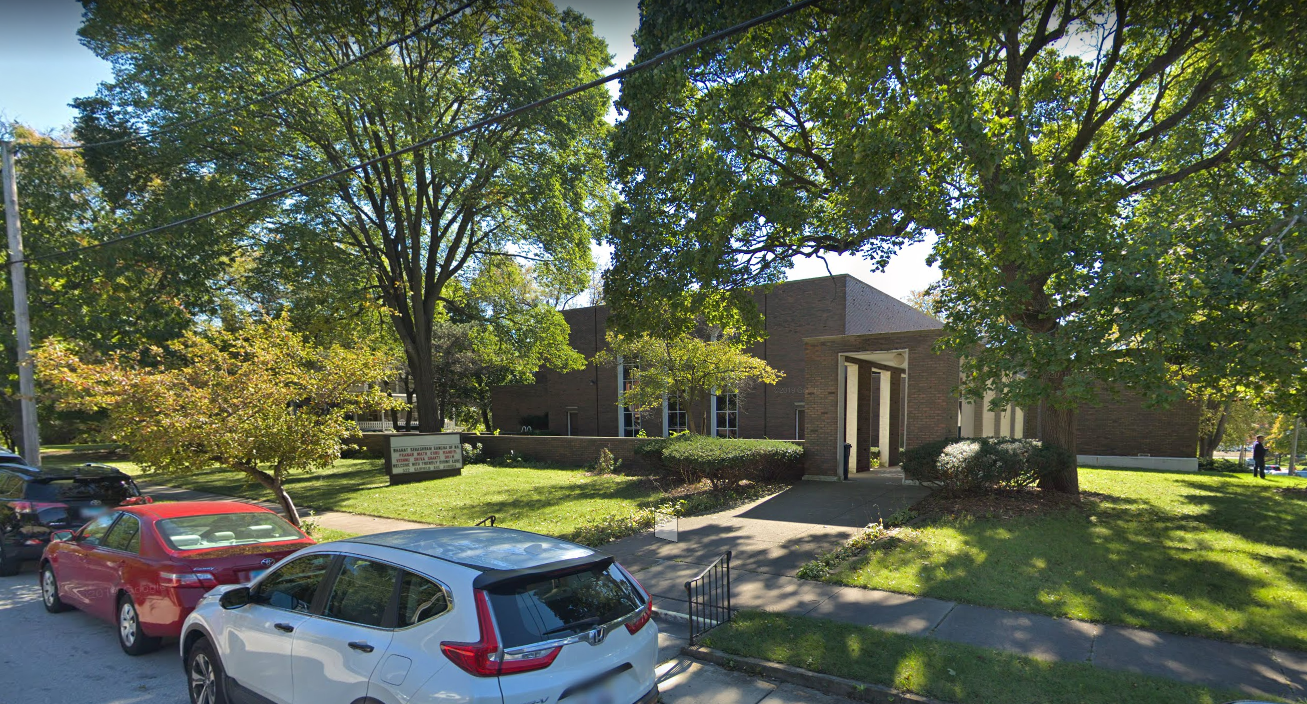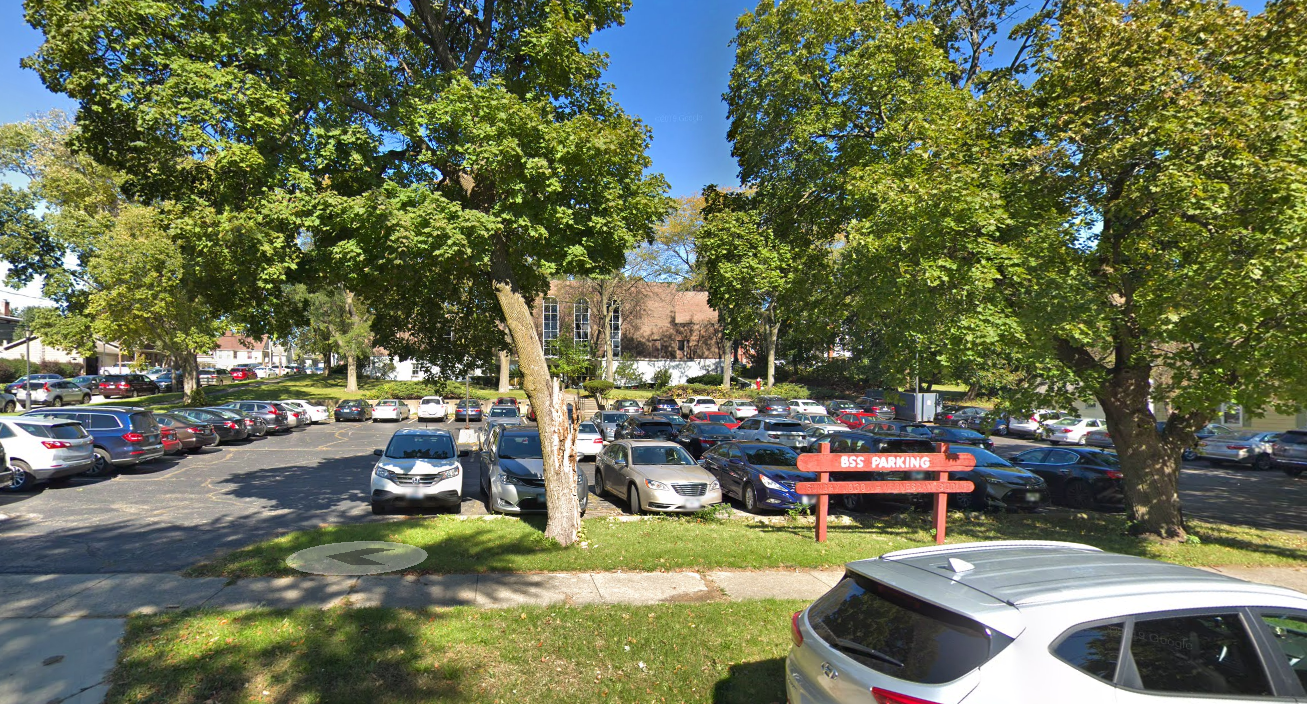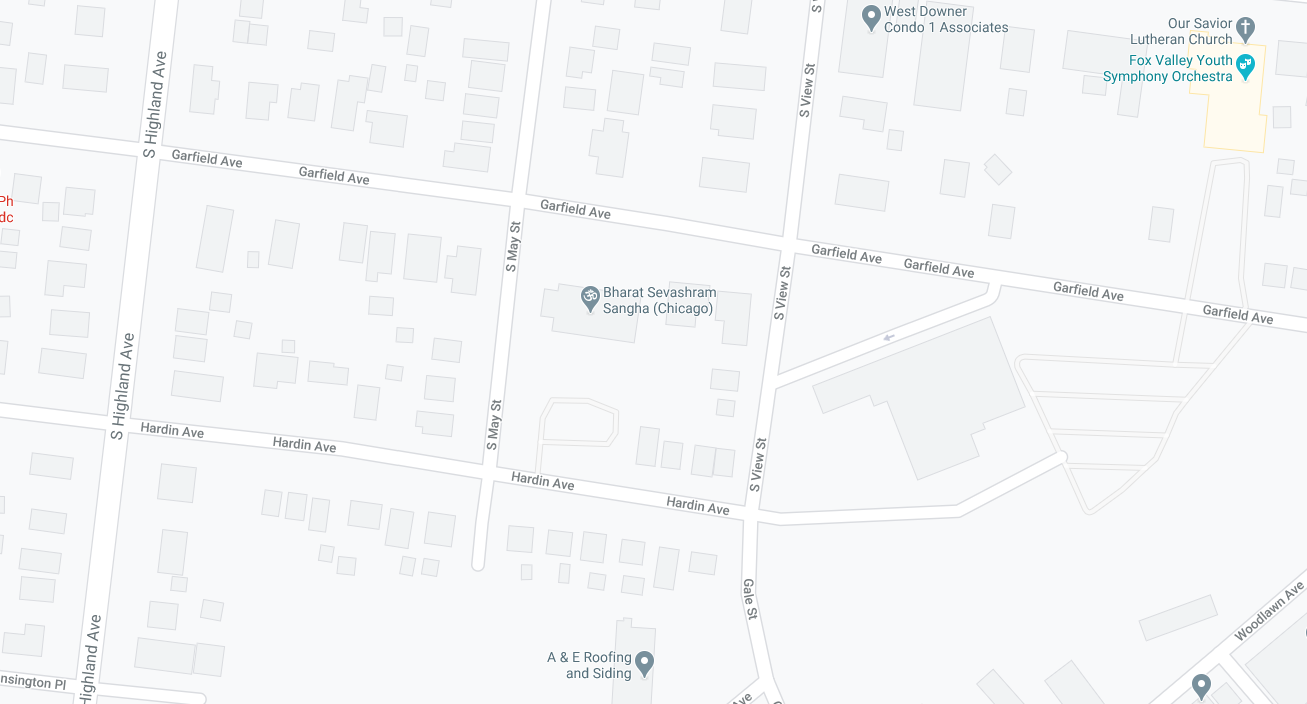Bharat Sevashram Sangha of North America
522 Garfield Ave, Aurora, IL, 60506
Ph: 630-301-6039
bssanghachicago@gmail.com



About BSSNA
The presiding Monk Minister is Srimat Swami Purnatmanandaji Maharaj. At the age of 90, he has been with Bharat Sevashram Sangha for over 68 years. He is one of the most senior monks in Bharat Sevashram Sangha. he is also the chairman, director, principal coordinator and chief official representative of all branches overseas. He has selflessly dedicated is entire life for the betterment of society.
The Chicago chapter of the Bharat Sevashram Sangha was founded by Swami Purnatmanandaji. It was first located on California Avenue just off Devon Avenue in Chicago. It soon outgrew the small location and was moved to a quiet sanctuary in Rohrssen Rd in Elgin. Now in response to community needs for a center for learning, sadhu-sangha, and prayer, the Ashram has been moved to a large building in a quiet neighborhood in the historic town of Aurora in the summer of 2007.
Ashram has also acquired a house to serve as a guest house, to accommodate visitors wishing to stay overnight. If you wish to come and take advantage of this convenience, we ask that you please call ashram ahead of time to make sure you can be accommodated properly.
The History

The History of Acharya Srimat Swami Pranavanandaji Maharaj and the Bharat Sevashram Sangha
Birth and Childhood
It was on the most auspicious full moon day in the month of Magha (Feb-March) in the year 1896 that this great Acharya was born in a well-to-do middle class Kayastha family in the village of Bajitpur, in the Faridpur district of Bengal (now Bangladesh). His father, Sri Vishnucharan had performed an austere penance for a long time, and it was believed that as a result, Lord Shiva incarnated himself as his son.
The Acharya, known before renunciation as Binode, was extremely meditative and reflective from birth. Strangely enough, he never kept himself aloof from social welfare activities of any sort. He was intensely particular about the moral conduct of youths for whom he spared no pains to help in developing their characters. His presence emanated an atmosphere of peace and happiness. His headmaster, Birendra Bhattacharya, was so much attracted by Binode's spiritual nature that he would make sure that he was always at home when he was performing his evening devotions.
Conditions and Attitude of Society
Binode led an uninterrupted continent life from his boyhood dedicating his heart and soul towards the resuscitation of Hinduism and of the moribund culture of the time to revive Indian nationalism to its pristine glory.
The general condition of the society during this time -- the depressed, disorganized, poverty-stricken Hindus being exploited in one way or another -- caused him no little distress. He was so much concerned about the life of the youths in particular that one day he told his headmaster that if the values of India were to be preserved, he would have to renounce the world.
It is a long-established Hindu belief that to eradicate the evils prevalent in society, tapasya (self-sacrifice) is needed. The greater the evils, the greater the tapasya. To renounce the world in order to save it is clear indication of Acharya's conviction that ultimately only through Dharma can human problems be effectively eradicated. Conversely, we may say that human problems are mainly caused by the neglect or absence of religious conduct in the society. Whereas humanists are of the opinion that the cause of such problems are of a materialistic nature, the placement of humanism within a divine context aims at the masses but starts with the individual. In fact, Hindu philosophy decrees that a person must elevate himself spiritually to be of utmost help to others.
A Friend of the Helpless
Swami Pranavanandaji's love for the poor, depressed, helpless, and downtrodden people was unparalleled. He said "collect and knit up carefully together all the scattered individuals into a great social power and thus relieve the poor and depressed, save the helpless and downtrodden, bestow peace and bliss on the heart of the people in sorrow and agony." His heart always bled for all high and low, but especially for those in the lower stages of society.
Acharyadev was concerned with physical, economic, social, moral, and spiritual upliftment of society and because of his high spiritual attainments, he was able to address these very effectively. An emminent Indian historian, Ramesh Chandra Majumdar, said about Acharya "We can safely call him the greatest social reformer of our time. Being a sannyasi of lofty and vast spiritual attainments, he blended high spiritual ideas with a modern outlook, which made his reform movement unique and effective."
The first important relief activity Acharyadev engaged in was in 1919 when a cyclone struck Bengal. Acharya had been preparing for such an event. He used to leave an earthen pot at homes of several families who would put a handful of rice into it from their daily use as a form of sacrifice. He also used to collect donations from the students. With his batch of young followers, he was able to start relief operations immediately after the disaster.
For the first time, people saw sadhus actively identifying themselves with their suffering. Some people were even doubtful whether it was proper for sadhus to engage in worldly activities! Enlightened leaders of Bengal at the time were so impressed that they offered the Acharya their support.
In a devastating famine in 1921, newspapers reported Acharya's relief operations in glowing terms. This attracted the attention of Sir P. C. Roy, a well-known scientist, who immediately organized a Central Relief Committee in Kolkata and Mumbai, which worked in cooperation with the Acharya and his workers in vast rescue operations. A year was spent in relief work. At the end, sixty thousand rupees remained and at the suggestion of Acharyadev, Sir P. C. Roy and his committee agreed to use it for rehabilitation of the victims.
About Acharyadev's leadership, Sir P. C. Roy said, "...hundreds of workers he recruited in no time! Would this relief work have been possible only with money, rice, and clothes that were collected? ... It was the management of a competent leader that made the thing successful. For all these years whatever I thought and did to mitigate the suffering of the poor can be done in an organized way -- this is what I see now. Throughout my whole life I have spent my days in the research laboratory, have written books and lectured. Now I am a convert in this new field. How much can be done by haranguing the town people? Ninety percent of people live in villages but are dying out. You are all showing the true work of village reconstruction."
The Seva Movement
The Acharya's ideals of political and spiritual freedom were deep-rooted in democratic methods. He did not expound any political theory for the country. The rebuilding of the force of character of the nation was his only aim. He wanted everyone to perform his duties with a sense of dedication to the Lord -- let the student mind his studies, le tthe teacher teach his pupils, let the worker labor for maximum production. All labor everywhere should be honest with maximum output, industrialist and landlord should ensure a rational honest and equitable distribution of production and profits, the businessman should ply his trade in just and correct ways, and the politician should be true to his manifesto and proclaimed program. Everyone must be true to his own self. Imagine the six hundred and odd millions toiling, from the babbling babe to the decrepit old man, in service to society in a spirit of dedication, as enunciated by the Acharya. The result is bound to be an era of peace and prosperity to such a nation!
Acharya's religion is not shrouded in mystery or superstition. Those who were hungry, sick, naked, and illiterate find it most satisfying. Apart from what the branches of the organization are doing all over India, a great "miracle" is happening at Jamshedpur in Bihar where the Sangha has adopted 812 villages with an area of 1100 sq. km. and a population of over 12 million. These villagers are amongst the poorest in India and a large percentage of the villagers are infected by leprosy. In 1979 the Sangha started a 24-bed hospital, in a thatched mud hut, and 52 outdoor clinics treating nearly 30,000 patients. Impressed by the service, in 1982 the Union Government of India and the State Government of Bihar entrusted the Sangha with the task of taking effective measures with a view of controlling and eradicating leprosy in those areas.
Within a decade, these slum areas are taking on a new look. There are over four hospitals with modern equipment and drugs. Over 3500 patients have been cured by the end of 1989. A once frustrated and depressed community now has new life; their faces are lit up with cheerfulness and they look forward with hope.
Is it a miracle happening at Jamshedpur or a revelation of the power of dedication working to change human destiny? In whatever way one looks at it, one finds the divine personality of Acharya Swami Pranavanandaji Maharaj central to the transformation that is underway.
